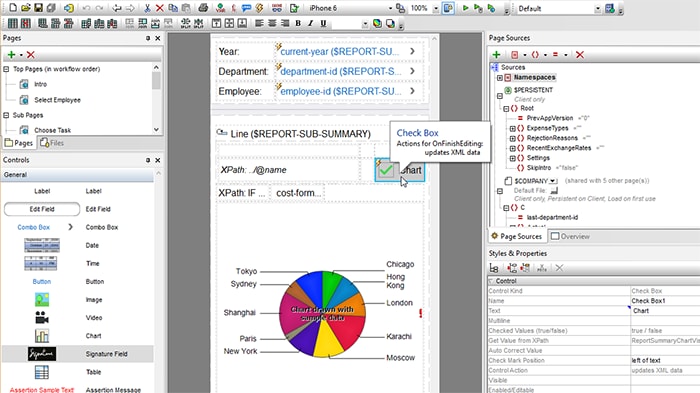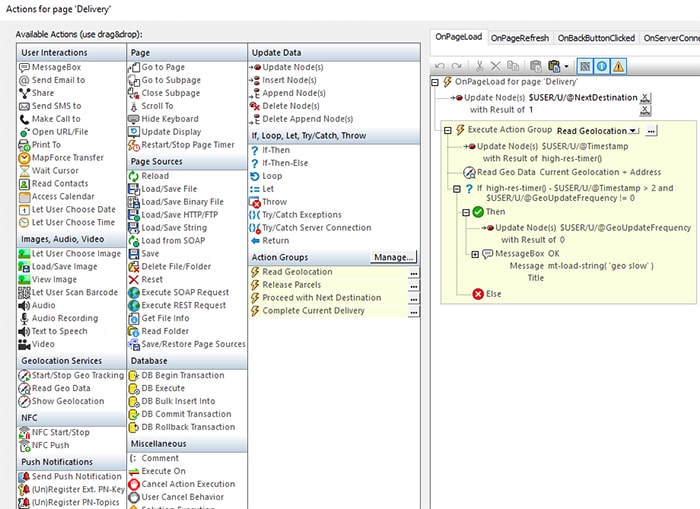How Low-Code Can Solve the Developer Shortage
The shortage of software developers in recent years is hardly news – and it’s not getting any better. A recent study arrived at a stunning revelation: software developers are now more valuable to companies than money.
Let's take a look at some of the factors contributing to the problem - as well as how the emergence of low code tools is helping to solve it in a few surprising ways.

Attracting Developer Talent
C-suite executives know that remaining competitive requires more than just capital. 61% of execs identify scarcity of developer talent as the number one threat to the success of their business.
It’s an evolving mix of applying technology to increase efficiencies and provide customers with innovative solutions, all the while maintaining and updating the legacy systems that keep the ship afloat.
Though markedly distinct, each of these priorities requires skilled software engineers, producing job opening after job opening in a field where help is already scarce. In fact, it’s predicted that by 2020 an excess of 1 million programming jobs will go unfilled in the United States alone.
This amounts to a golden opportunity for software engineers – they’re in demand and can secure top pay. Forrester reports that companies struggling to find quality developer talent will pay up to 20% above market salary rates while offering increasingly attractive benefits: unlimited vacation, flextime, fully paid health benefits, and so on. Yet, paradoxically, the number of students graduating with computer science degrees and entering the field is shrinking over time.
Even when firms can find and keep developer talent, the technical landscape is constantly changing, requiring expertise not taught in computer science programs and not acquired without ongoing training. Trends in big data, IoT, AI, and mobile require fresh and newly learned skills, not to mention the business expertise and soft skills required to not just write code, but to effectively solve problems.
So now the crisis becomes not just one of quantity, but also of quality.
Unlike other challenges, increasing hiring budgets and throwing new incentives at the problem just won’t solve it.
A solution has begun to emerge with a synergy between nontraditional developers and tools vendors.
The Rise of the Citizen Developer
Driven by necessity, companies are turning to nontraditional hiring, internal training, and promoting talent from within. In this scenario, employees without a formal computer science degree dig in to learn the technology, backed up by their business acumen, on-the-job experience, creativity, and problem-solving skills. In companies that foster ongoing training and encourage experimentation, these citizen developers – whether they be former IT pros, QA engineers, DBAs, ortech-savvy business users – can thrive.
Part of this trend is, of course, thanks to technology itself. Professionals in a variety of fields, and especially millennials, are increasingly comfortable learning newtech and are willing to roll up their sleeves to create what they need without waiting for developer or IT bandwidth to become available.
In the enterprise and across verticals, these power users are getting the job done. With their unique perspective, citizen developers aren’t just helping firms fill the software engineer gap – their diverse skillsets are driving innovation at the same time.
Yes, They Can Build It
One of the biggest trends buoying citizen developers has been the emergence of low code application development tools.
Low-code development platforms provide an environment for building software using graphical interfaces instead of writing all the code manually. This approach decreases time to market considerably by allowing traditional and non-traditional developers to concentrate on designing functionality visually rather than translating behavior to code.
One of the areas in which low code development software has seen the greatest uptake is in mobile app development, where the need to build for a variety of operating systems and devices multiplies the work required for a single application several times over, often requiring separate, specialized developers with specific iOS, Android, and Windows experience.
Though originally designed with the idea of helping programmers get more done in less time, low-code tools are revolutionizing the software development world because they’re accessible to a wider range of professionals.
Companies find that employing low-code development tools accelerates development and therefore saves resources across the board, and since they can be used by traditional and citizen developers, development power is further amplified.

Choosing a Low-Code Framework
Given the potential of low code for increasing efficiencies, there’s been an influx of products to the market. An effective low code development tool should offer rapid app development without sacrificing the sophistication required to meet complex business needs. A quality low code development framework should provide:
Speed coupled with sophisticated functionality. Rapid development is useless if the final product is subpar. The job of the low code framework is to let the developer focus on solving the problem efficiently while delivering a seamless experience for users of the finished app. Plenty of products let a power user simply mobilize an existing process or cobble together a few procedures but to truly empower citizen developers, a low code product must generate a full-featured application.
Support for diverse data backends. Products built for a single ecosystem or that only interact with one database vendor are too limited to be effective in the mix of legacy systems, various databases from multiple vendors, data from the web, and even regulatory data formats that exists in today’s enterprises.
Unified development of front- and backend. When a product only gives developers the ability to build a front-end UI, it means depending on another backlogged team to implement the back-end server logic for the application, thus negating the benefits.
Comprehensive testing tools. Testing must be an integral part of each development phase and should be built directly into the low code environment. Using third-party testing tools is complicated and time-intensive.
A Low-code Solution
Best known for the XMLSpy XML editor and MapForce data mapping tool, Altova has always focused on offering products that provide graphical views that abstract away the complexity of supported technologies.
But with MobileTogether, we debuted a true low code framework.
Launched in 2014, MobileTogether was an early entry in the low code field and since has been adopted by traditional programmers and citizen developers to rapidly build applications driven by back-end data. The framework offers the ability to build a single design that will then generate native mobile apps (iOS and Android), a desktop app (Windows 10), a web app – or all of these, as is often required in BYOD scenarios.
Drawing on the Altova's experience building tools for integrating back-end data in XML, JSON, databases, and legacy formats, MobileTogether excels at building data-driven solutions.
The MobileTogether framework includes the MobileTogether Designer for building apps as well as the backend server that provides data connectivity and processing, so developers define the UI and backend logic in one environment, at the same time.
The framework offers the ability to build enterprise apps (forms, dashboards, reports, etc.) as well as to generate stand alone iOS, Android, and Windows apps to be offered in the various app stores. Generation of full-featured web apps is also supported. Desktop and mobile are both covered with a single design.

The MobileTogether approach was designed to offer low-code speed without sacrificing the sophistication of the end product.
Developers build their UI by dragging and dropping controls and other UI elements onto the design. Event handling is also a visual, drag-and-drop process driven by what Altova calls Action Trees.
Action Trees provide a visual programming flow for the application, and they support XQuery for data manipulation. A declarative programming language, XQuery gives the developer the ability to define complex data processing logic in an elegant and concise manner. And, most importantly, while XQuery is powerful, it’s also easy to learn and highly accessible to citizen developers, especially those familiar with SQL or Excel formulas.

Testing is also integrated at each step of development, with a built-in, multi-device simulator, on-client simulation, and fully automated testing for recording and replaying test sequences on a variety of device environments.
This low-code approach lets citizen developers build, test, and deploy a full-featured app within a week or two.
Empower Citizen Developers Now
Companies feeling the crunch from a developer shortage should consider empowering their existing teams with additional training opportunities and low code software solutions such as MobileTogether.
Low code is helping bridge the widening gap between the programmer shortage and ever-increasing development projects. It provides a cost-effective solution for empowering traditional and nontraditional software developers with tools for building high quality apps in a fraction of the time.
And, since the MobileTogether Designer is free, you can get started right away.